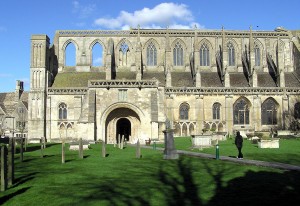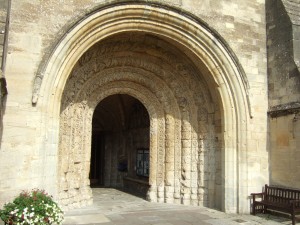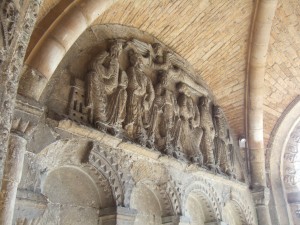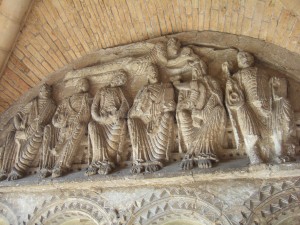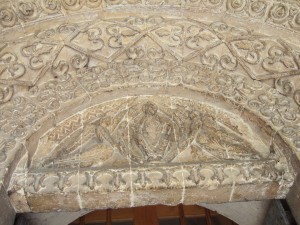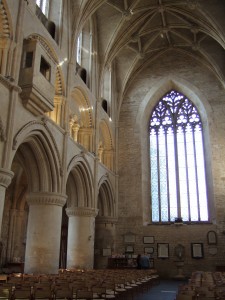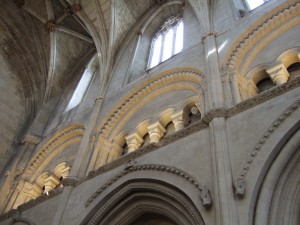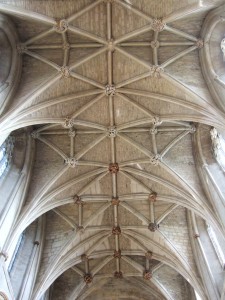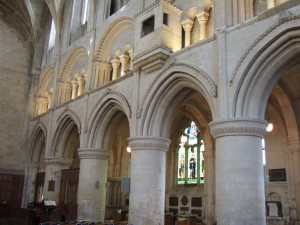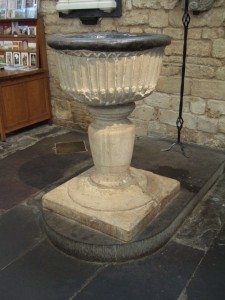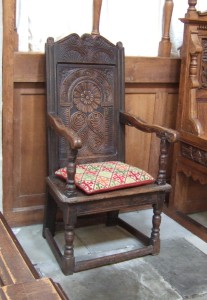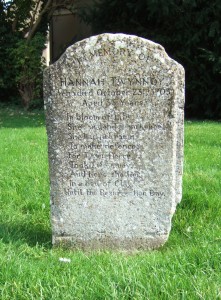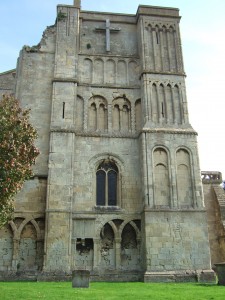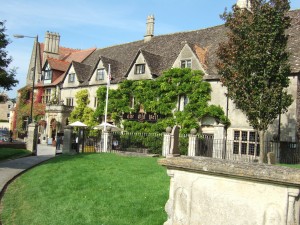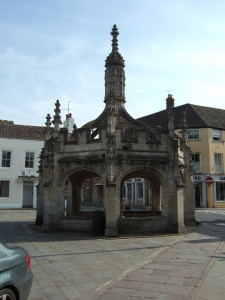A couple of Sundays ago Chap and I headed north, and visited Malmesbury Abbey and Cherhill in north Wiltshire. I wrote about Cherhill in a previous post, and now it’s Malmesbury Abbey’s turn, and also the sad tale of one of the inhabitants of the Abbey’s graveyard.
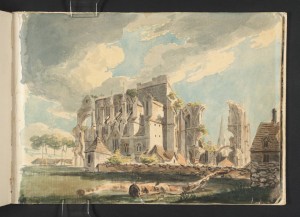
‘Malmesbury Abbey from the North-West’ by Joseph Mallord William Turner, 1791. Watercolour on paper. One of a series of sketches Turner painted of the Abbey. Tate Britain.
But first, a little about the Abbey itself. It is a wonderful building: its slightly unprepossessing exterior when viewed from the south doesn’t really prepare you for the interior, I feel. As you approach the south door you get the first hint that something exceptional is here: the Norman arch over the entrance porch is simply stunning. Its 850-year-old carvings tell the stories of the creation, the journey of the patriarch and kings, and the life of Jesus.
The present Abbey is the third house of worship to stand on the site, and this incarnation was substantially completed by 1180. Its construction continued piecemeal over the next two hundred years, and it had a spire taller than that of Salisbury Cathedral (which is a whopping 123 metres (404 feet) high, the tallest in the UK) at the east end, and an impressive tower at the west end. The spire and the tower on which it was built fell around 1500, and the tower fell abut 50 years after that: both collapses demolished large parts of the building. All that is left intact today is the nave of this once-enormous abbey. It is still used for worship, and is a much-loved building surrounded by the ruins of its former glory.
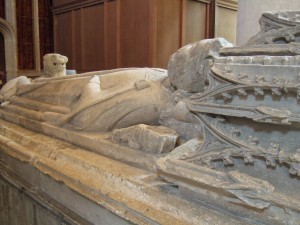
The 14th century tomb of King Aethelstan (c.893/895-939 AD), who is buried in an unknown spot somewhere in the Abbey grounds.
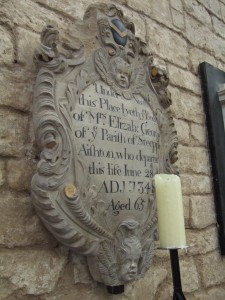
One of the many monuments on the walls to the great and the good of the area. This one commemorates Mrs Elizabeth George of nearby Steeple Ashton, who died in 1734.
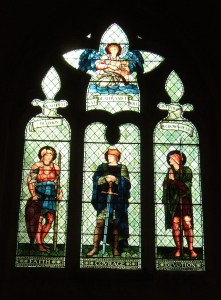
Stained glass window designed by Edward Burne-Jones and made in the William Morris workshops in 1901.
And wow—look at these flowers. They greet visitors and worshippers alike as they come in through the porch, and whoever was on the flower rota when these were done gets a gold star from me! Such a simple and beautiful arrangement of blue delphiniums, white asters and a white umbellifer—possibly Ammi major (also known as Bishop’s Lace, which is appropriate)—plus foliage.
Hannah Twynnoy bears the sad distinction of being possibly the first recorded death by tiger attack in the United Kingdom. Little is known of her apart from her gravestone, and a memorial plaque which provided some details of her life and sad demise, but which has since been lost. Apparently Hannah was a young barmaid at the White Lion Inn in Malmesbury, and one day somehow got close enough to a tiger displayed by a visiting menagerie for it to be able to maul her, with fatal results. She died on 23 October 1703, aged 33 years. She was buried in the Abbey grounds, and her headstone reads:
In bloom of Life
She’s snatchd from hence,
She had not room
To make defence;
For Tyger fierce
Took Life away.
And here she lies
In a bed of Clay,
Until the Resurrection Day.
